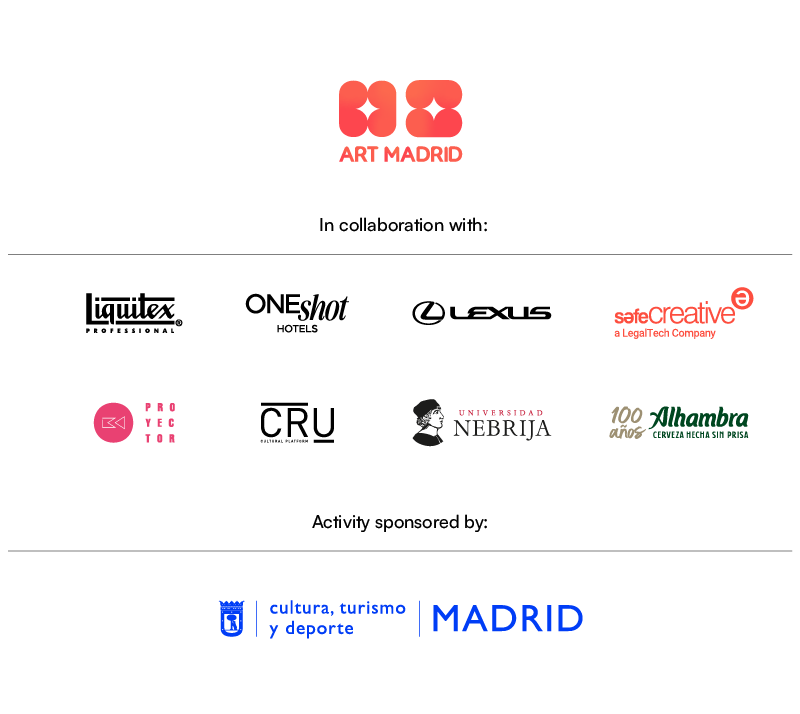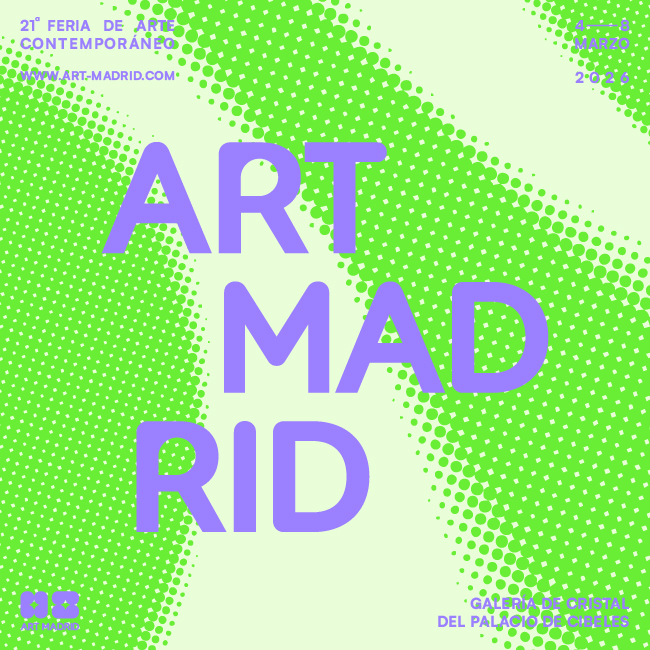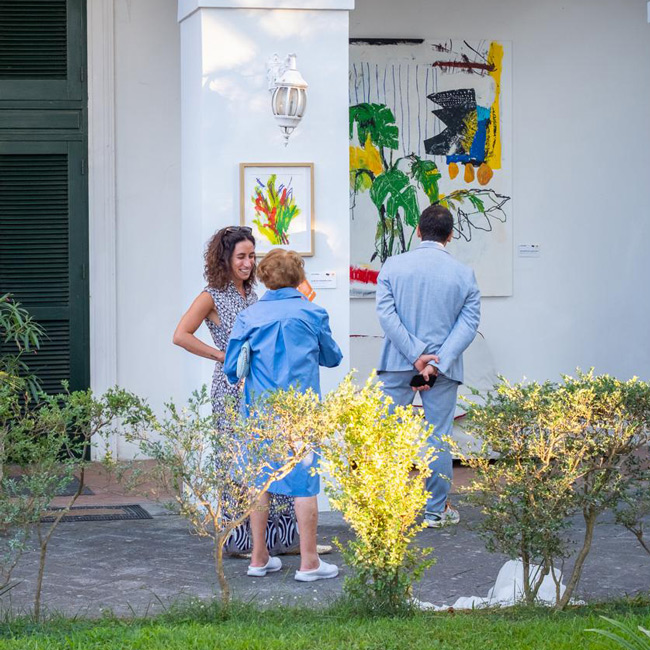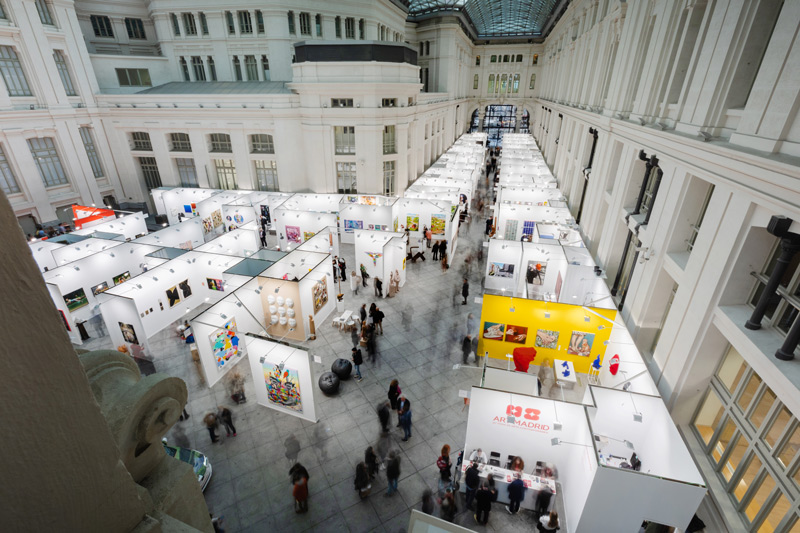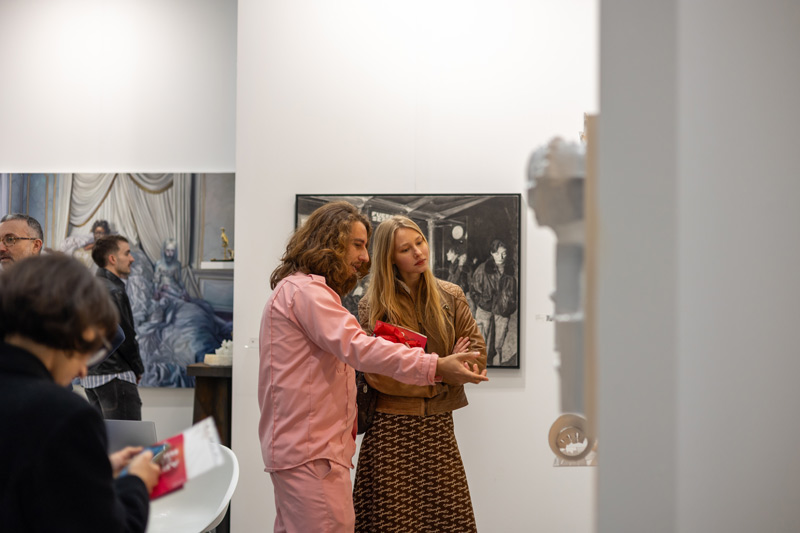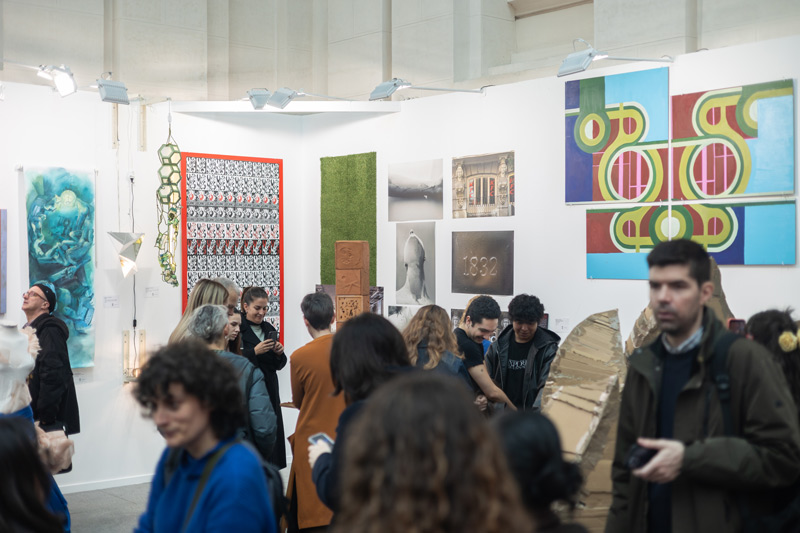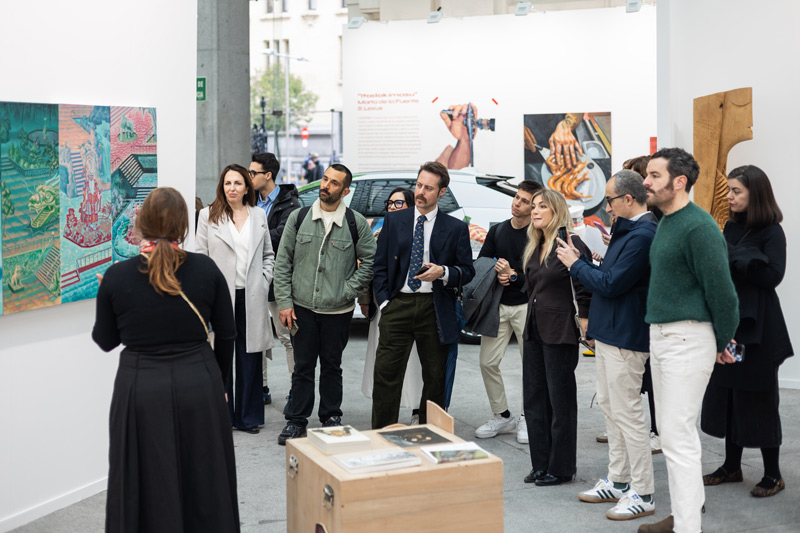RAÍCES AFUERA. PERFORMANCE CYCLE
Feb 17, 2025
art madrid
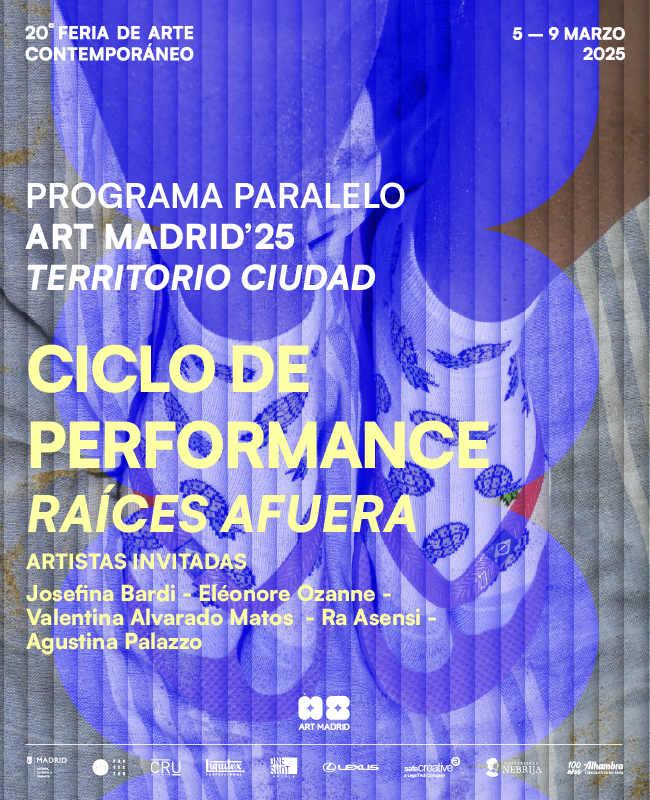
PARALLEL PROGRAM CITY TERRITORY. ART MADRID'25
RAÍCES AFUERA. PERFORMANCE CYCLE
Art Madrid, committed to creating a space of enunciation for artists working around the performing arts, presents Raíces Afuera, a performance cycle that takes as its starting point Simone Weil's book, “Echar raíces” (Editorial Trotta, 2014), to explore the notion of belonging and the need for rootedness in a contemporary world characterized by fragmentation, displacement and disconnection. The project is situated in the context of the fair as a critical and reflective space that challenges the relationship of the individual with his environment, his community and his sense of identity.
In the light of this context, some thought-provoking questions arise: What does it mean to put down roots? Is uprooting an experience linked exclusively to a physical place? Is it possible to be uprooted from oneself?
Simone Weil defines rootedness as a vital need of the human soul, as important as food or shelter. An intrinsic and individual instinct to recognize and restore the ties that connect us with other people and our roots, whether cultural, familial, spiritual or territorial. Based on this premise, Raíces Afuera proposes a space where performance acts as a means to reconnect, make visible and confront the processes of uprooting, recognizing how it impacts the lives of millions of people today.
In the book, Echar raíces, Simone Weil defines rootedness as a fundamental need of the human soul, a vital condition that allows individuals to feel part of a community, an environment, and a history. According to the author, the lack of rootedness is one of the greatest tragedies of modernity, as it strips human beings of their sense of belonging and condemns them to alienation and emotional precariousness. From this perspective, the Raíces Afuera, the Performance Cycle, presented by Art Madrid, stands as a critical space for resistance against the disintegration of the bonds that structure individual and collective identity.
In a world marked by displacement, forced migration, and disconnection, uprootedness is not only a geographical experience but also a symbolic and emotional one. Simone Weil argues that uprootedness is the cause of countless forms of contemporary suffering: from the crisis of community to the dehumanization in labor relations, from political indifference to alienation in daily life. Josefina Bardi (Santiago-Chile, 1996), Eléonore Ozanne (Corbeil-Essonnes, France, 1990), Valentina Alvarado Matos (Maracaibo, Venezuela, 1986), Ra Asensi (Bilbao, Spain, 1989), and Agustina Palazzo (Córdoba, Argentina, 1992) are the artists invited to Raíces Afuera. Through five performances, the project proposes an exploration of the possibility of symbolic and affective re-rooting. The works address fundamental questions: Is it possible to reconstruct rootedness in a world that promotes constant mobility and disconnection? Can the body be a refuge, a space of resistance against forgetfulness and dislocation? To what extent can the performative act restore community ties and generate new forms of belonging?
Performance, as an ephemeral and embodied art form, fosters a reflection on rootedness that transcends the conceptual and manifests in the shared experience between artist and spectator. The performative action becomes an act of restitution, an invitation to rebuild connections through mutual attention and sensory experience. As Weil suggests, true rootedness is not found in the imposition of a static identity or in the nostalgia for an idealized past, but in the openness to reciprocity, care, and the recognition of the other.
From this perspective, Raíces Afuera questions the contemporary conditions of existence, shaped by economic precariousness, gentrification, and the technologization of human relationships—processes that erode the sense of belonging. In this context, performance emerges as both a poetic and political act of resistance, reminding us that, in Weil’s words, the absence of roots is one of the greatest afflictions of our time, and that any possibility of re-rooting represents an act of restoring human dignity.
Thus, Raíces Afuera is shaped as a space of inquiry into the human condition in the present day. The body is placed in the tension between loss and reconstruction, collective memory is reactivated, and the public space is redefined. The performances that make up this cycle lead us to reflect on the urgent need to put down roots, not as a return to the past, but as a strategy to resist and rehumanize in a world that constantly pushes toward disconnection.
ABOUT THE ARTISTS
Josefina Bardi Prida (Santiago, Chile, 1996) is a visual artist and educator, currently based in Madrid, Spain. She holds a degree in Visual Arts from Universidad Diego Portales and has furthered her education with a Master's in Plastic, Artistic, and Visual Education at Universidad Nebrija and the Instituto Cervantes. Her teaching career spans institutions in both Chile and Spain, where she has worked as an arts teacher and as a collaborator in workshops with prominent artists. Professionally, she has served as the head of the ceramics workshop at Brio Atelier, production assistant and artwork coordinator for artists such as Cristóbal Ochoa, Camila Ramírez, and Sebastián Mahaluf, in addition to working in graphic design.
Her work has earned various accolades, including First Place in the Santiago Municipal Young Art Award (2024) and the PAAL residency at Zapadores Ciudad del Arte (2023). She has held solo exhibitions in Santiago and Madrid and participated in numerous group shows across the Americas and Europe, including the Biennial at the Museum of Memory and the MAC Quinta Normal.
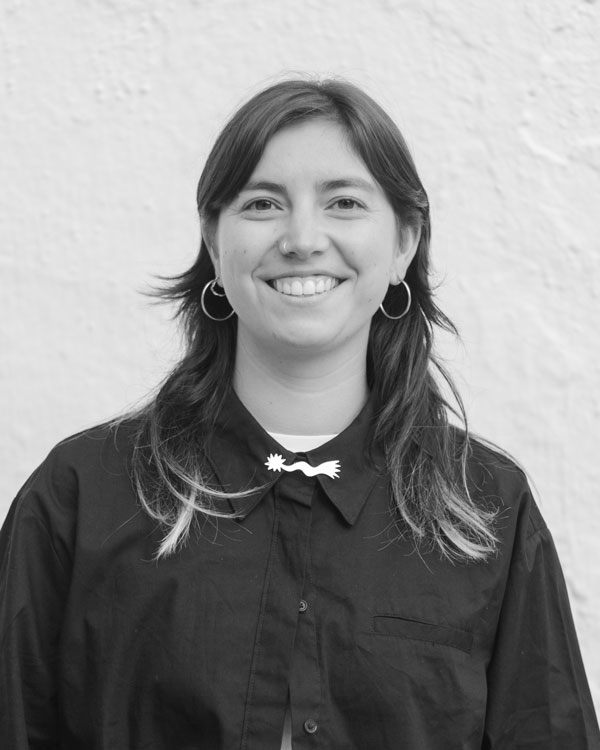
Josefina Bardi presents her performance: ENSAYOS DE DESPLAZAMIENTOS at Art Madrid'25
The project is part of the artist's ongoing research into her relationship with her twin sister, a theme she has been exploring since 2018. Over this period, a series of live actions and visual experiences have emerged, connected to sculptural concepts such as weight, gravity, form, and space, all in tension with the notion of duplicity. Through this research, the artist studies how two twin bodies connect and interact with each other, as well as with the spaces/territories they inhabit.
Within this context, "putting down roots" is addressed through the displacement of bodies, the theme of connection, and its relation to distance and territory. The idea of duplicity is explored, inviting the audience to question personal connections by positioning twin bodies in situations of tension with suggestive architectural spaces. The concept of space is referenced in relation to the distance that has separated the artist from her sister since 2022, a distance that conditions and challenges notions of physical territory, time, communication, emotion and affection.
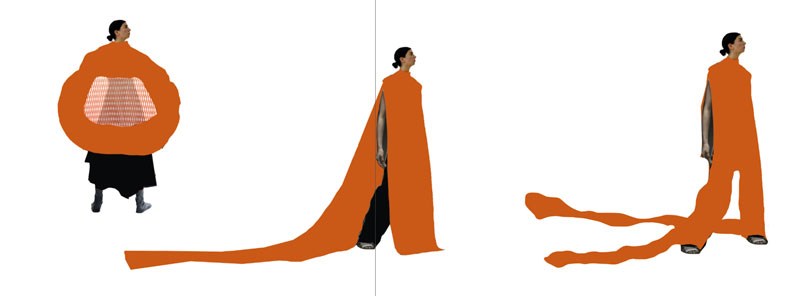
Eléonore Ozanne (Corbeil-Essonnes, France, 1990) is an artist and researcher working between France and Spain. She is a doctoral candidate in Fine Arts at UPV/EHU and Université de Pau et des Pays de l’Adour. Her work focuses on the relationship between the body and borders in everyday spaces. Through displacement, the multidisciplinary artist draws the concept of borders as physical limits or invisible walls that are crossed daily. She uses her body as the central axis of her work, exploring through actions, the movement through, across, or into predetermined spaces or times.
She has been awarded numerous residencies in Spain, Mexico, and Europe, including NauEstruch and CECDA in Veracruz. She has collaborated with artists such as Pilar Albarracín and is a member of the research teams Gizartea and Alter, where she actively participates in exploring ways to understand precariousness and displacement in the era of globalization. Her work has been exhibited at international festivals and venues, such as Matadero Madrid and Cidade da Cultura de Galicia. Additionally, she has published texts on art and precariousness in publishers like Dykinson and the University of the Basque Country.
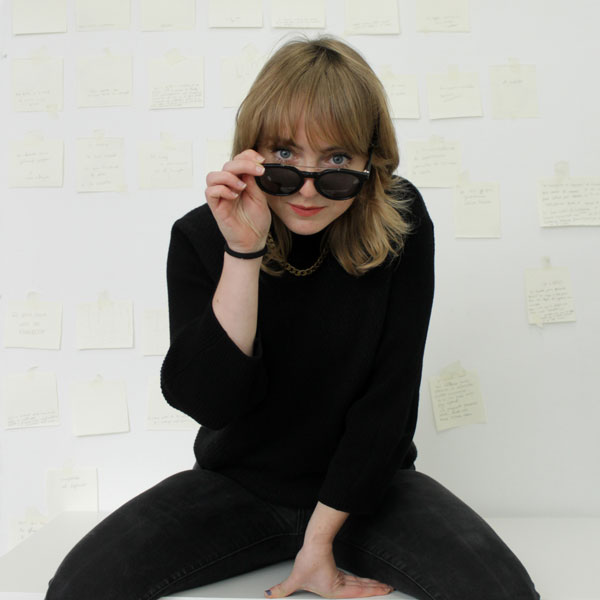
Eléonore Ozanne presents her performance: LAS FRONTERAS SIEMPRE TIENEN DOS LADOS at Art Madrid'25
Las fronteras siempre tienen dos lados is a work that invites us to reflect on the invisible borders that are part of our daily lives. Through the words "sorry" and "thank you," the artist proposes a dialogue about how, in our everyday interactions, we are constantly confronted with boundaries and distances, both physical and emotional. Every time we use these words, we are acknowledging a separation, whether when giving way to someone or asking for help in moments of discomfort. The piece highlights how these small phrases, often repeated without much thought, serve as a way to negotiate our relationships with the world and those around us.
In this context, the borders explored in the work are not just geographical, but also social and personal. The barriers that separate us from others can be subtle, yet they significantly affect our daily lives. Through these gestures, we are constantly constructing, breaking down, or accepting limits that define our relationship with others. Las fronteras siempre tienen dos lados challenges us to question how we perceive these boundaries and how words, which seem simple, reflect the complex dynamics of our existence.
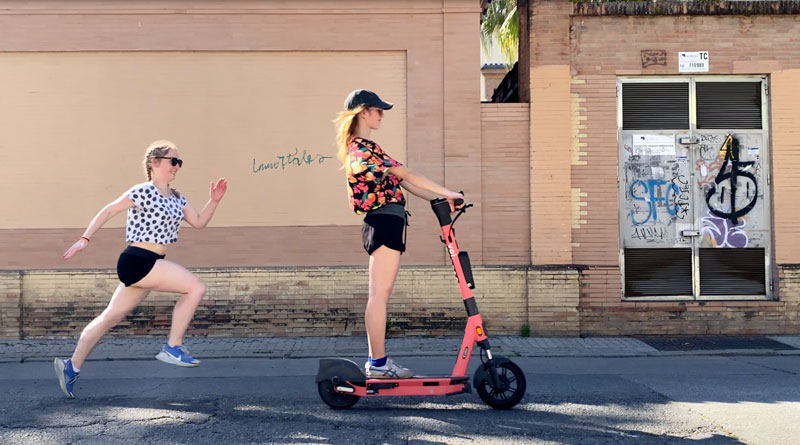
Valentina Alvarado Matos (Maracaibo, Venezuela, 1986) is an artist who explores moving images with a critical gaze on the diaspora, landscape, and gesture. Her work has been exhibited in major spaces such as Artium, LIAF Biennial, IFF Rotterdam, Punto de Vista, Ambulante, Loop, Cinemateca Madrid, among others. She has been an artist-in-residence at Hangar, La Escocesa, Cultura. Resident, LIFT Toronto, and Matadero.
In 2024, she will present her work in Barcelona with Carlos Vásquez Méndez in El Otro Aquí at La Capella and Totalmente Rostro at La Virreina Centro de la Imagen. In addition to her artistic practice, she has taught at institutions such as Massana, Eina, Universitat de Barcelona, La Universidad del Zulia, LAV, CC Albareda, EICTV in Cuba, among others. Her films are part of the catalogs of distributors such as Light Cone, XCèntric, and Hamaca, and her work has been included in the book Remains–Tomorrow Themes in Contemporary Latin American Abstraction by Cecilia Fajardo-Hill.
Valentina Alvarado Matos' artistic practice focuses on the materiality and fragmentation of the image, using various media with an emphasis on the tactile qualities of film. She is interested in how materials leave traces of time and memory. Both cinema and ceramics, disciplines she works with, require manual processes that involve time and patience, such as manipulating reels, kneading clay, or cutting and splicing film strips. These deliberate methods contrast with rapid production, and both crafts and cinema are closely linked to tactile gestures and processes in their conceptual and formal approaches. Collage occupies a central place in her work, allowing her to layer fragments of images and materials to explore and deconstruct symbolic meanings, particularly around diasporic identity, landscape, and belonging. The layering process is not only a technique in her practice but also a narrative method that establishes dialogues between landscape and body, the personal and the political, the macro and the micro.
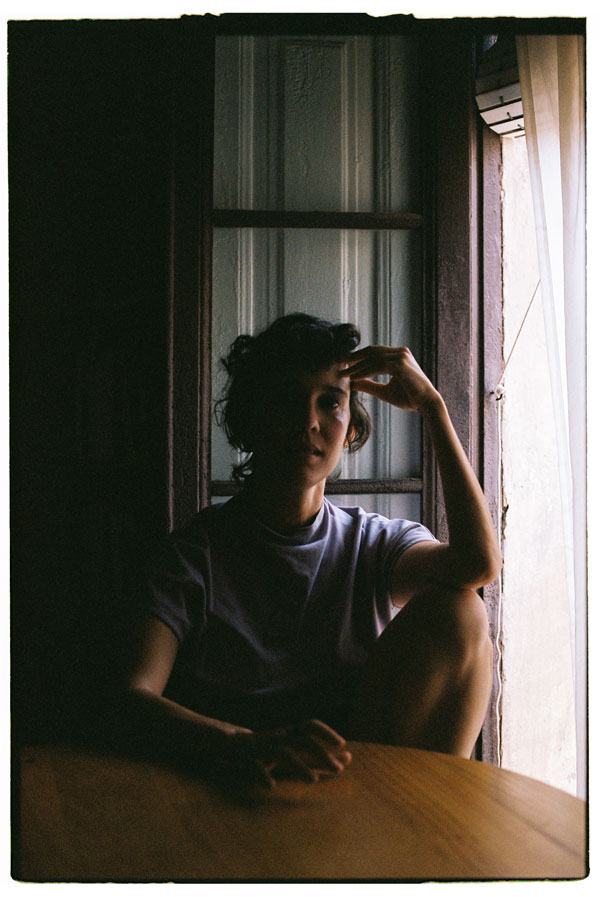
Valentina Alvarado Matos presents her performance: voy raspando la hoja y la voz at Art Madrid’25
Voy raspando la hoja y la voz is a piece that intertwines image, text, and sound, creating a sensory and conceptual journey into the memory of the landscape. In this work, the voice transforms into a fragmented narrative, a thread that weaves personal recollections while contemplating how landscapes shift, transform, and reconfigure across time and space. The journey is anything but linear; it takes the form of a meandering walk that crosses between the tangible and the symbolic, erasing the boundaries between the physical place and the language that seeks to describe it. The piece also examines how certain territories are represented, described, or distorted from different perspectives, challenging dominant narratives. The landscape explored here is not merely a physical space—such as a garden, park, or forest—but also a linguistic construction, a space reimagined through language. It invites the audience to reconsider the boundaries between the physical and the symbolic, the real and the narrated, urging a deeper reflection on how we perceive and define the spaces we inhabit.

Ra Asensi (Bilbao, 1989) creates artifacts as ways to (ex)tend the material limits of the body. This production is influenced by ceramics and its processes, performance art, photography, and sculpture. Notable solo exhibitions include Objeto (In)quieto at Fundación Bilbaoarte Fundazioa, Inadaptada Resistencia at the Montehermoso Cultural Center, and La lava que llevas contigo at TACA (Palma de Mallorca).
Ra Asensi's work focuses on creating artifacts as a way to expand the material limits of the body and initiate collaborative processes. Their production is influenced by ceramics and its processes, performance art, photography, and sculpture. Through their practice, they investigate the present and potential relationships between body(s), technology(ies), and nature(s), exploring how these elements interact and transform in different contexts.
Their works, interventions, and actions take place in various settings: Galería Fran Reus, 2024 (Palma de Mallorca); Art House Foundation Studio D, 2024 (London); 019-Ghent, 2024 (Ghent); Tabakalera, 2024 (Donosti); Colonia Industrial Cal Rosal, 2024 (Berga, Catalunya); Mercurio Festival/Instituto Cervantes, 2023 (Palermo); ECOS, 2023 (Sala Rekalde, Bilbao); BAP, 2022 (Guggenheim Museum Bilbao).
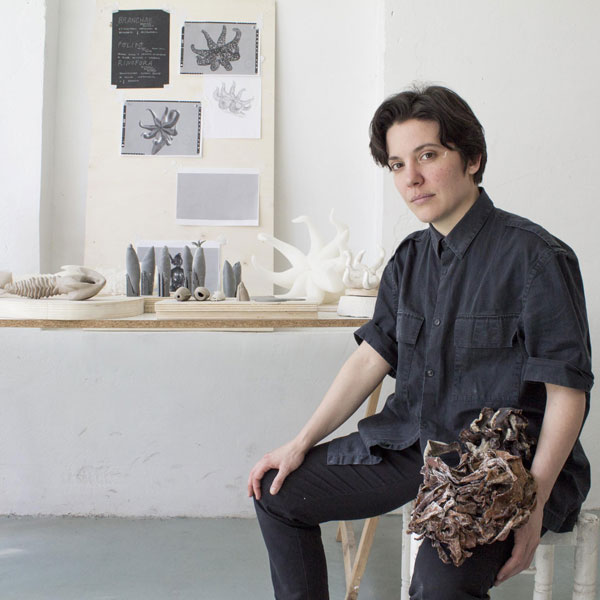
Ra Asensi presents their performance ESE ENTORNO ENDURECE MI PIEL at Art Madrid’25
Ese entorno endurece mi piel is a performance that unfolds through sculptural pieces made of oxidized corten steel with seawater. These bodily extensions also function as second skins. They are activated by touch, generating sounds. Together, they form a kind of poetic cartography. They have been produced from the traces of various watery bodies and transform in this process into maps of water.
"Life began in the sea, and our bodies have been committed to various narratives about this origin story ever since. I am not interested in narratives that place ‘the family’ in its place, but those of kinship in all its wonderful queer forms are still something I seek. That is the difficulty: embracing queer stories as a territory of connection and responsibility without reinstalling old myths of dark continents, woman as matrix, and other power plays of familial bonds." — Astrida Neimanis
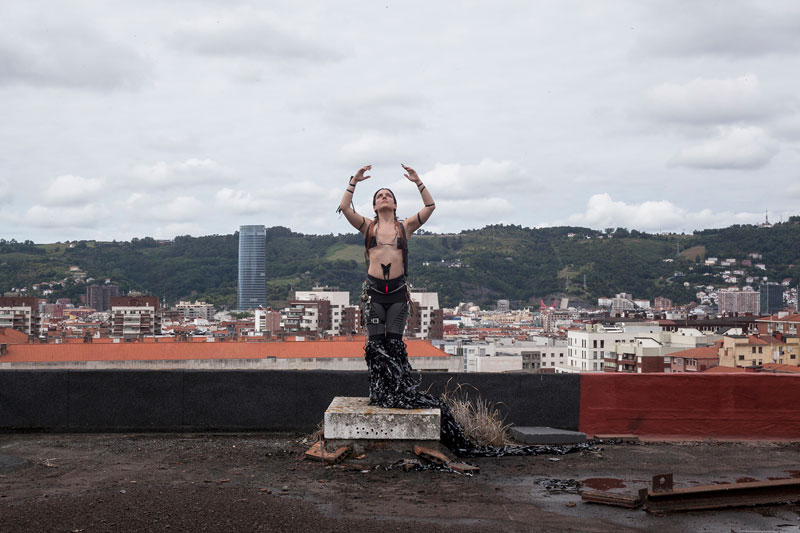
Agustina Palazzo (Córdoba, Argentina, 1992) is a multidisciplinary artist based in Barcelona. Her practice spans art, education, and cultural management within the context of the digital world and new technologies. Her work oscillates between the critical and the poetic, using emerging themes and technologies as creative tools in performance, sound design, and installation. Her artistic research draws from the relationship between communication, human behavior, and new technologies, generating experiences that question the boundaries of human behavior and the digital medium. She has participated in solo and group exhibitions, festivals, and residencies across Latin America and Europe. Some of the highlights include IMMERSIVA at Espronceda, Institute of Art and Culture (ES), Tsonami Arte Sonoro (CHILE), Rake Community, art and research platform (UK), SONAR + D (ES), LLUM (ES), Teorema (ES), 220 Contemporary Culture (AR), Millesuoni (IT), Espai 19 (ES), among others.
In free fall, I inhabit digital uncertainty. Agustina Palazzo
Agustina Palazzo’s work focuses on human behavior, desires, and misunderstandings, exploring the contradictions of the contemporary crowd caught between technological refinement and moral erosion in fragmented attention spans. It oscillates between the critical and the poetic, inspired by science fiction, utopia, and dystopia, but with an emotional sensitivity rooted in the present. Her practice moves between performance, installation, video, sound, and archives, using technology not only as a tool but as a symbol of a social and political condition. Drawing on its poetic dimension, she blends digital and analog techniques with everyday objects, creating tension in their meanings. Sound and radio are recurring elements in her search, but her language is expansive, crossing the visual, performative, and sonic. Experimentation, process, and critical reflection are central to her practice, inviting the viewer to question their relationship with both the digital and the real.
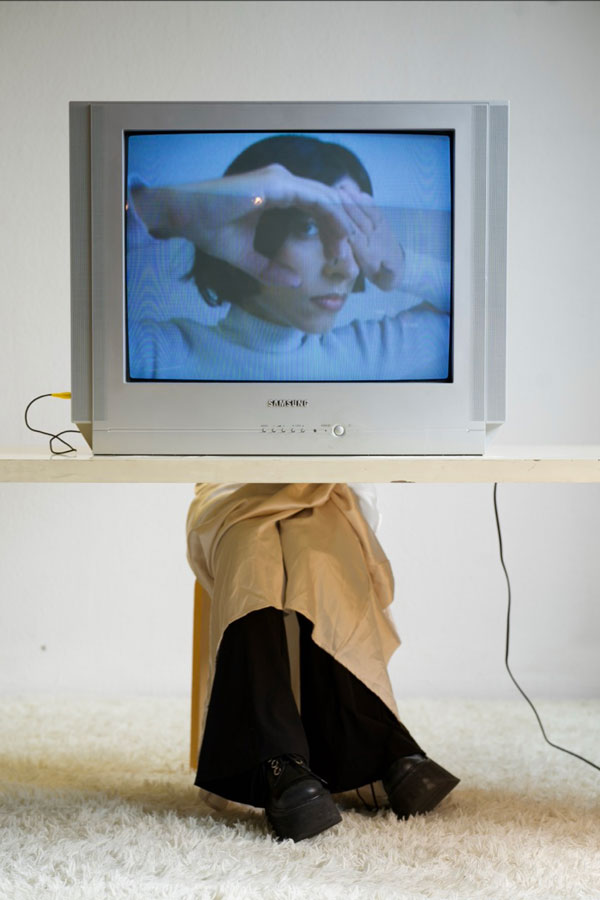
Agustina Palazzo presents her performance: EL PESO DE LA CIUDAD LO LLEVO CONMIGO at Art Madrid’25
El peso de la ciudad lo lleo conmigo aims to shed light on contemporary oppression, exploring how industrialization, urbanization, and digitalization shape the construction of identity, stripping individuals of a vital connection and leaving an existential void in a body that inhabits the saturation of the urban landscape. The antennas, these lifeless objects that hover over the urban landscape, serve as a powerful metaphor for an era overwhelmed by technological mediation. Their pervasive presence points to the paradox of a connectivity that, while promising to unite us, fragments our attention and collective experience. As unnoticed monuments, they invite us to reflect on how technology redefines our cities and our relationship with them.
The current urban landscape is an environment saturated with symbols of modernity and technological "progress." The television and radio antennas that soar above rooftops represent far more than just their technical function. They emerge as markers of change, connecting generations to a globalized world and transforming urban life into a network of communication and entertainment. This transformation of the urban landscape has direct implications for the contemporary body—one that is shaped and redefined by technology and its relationship to the environment. As Laura Barros Condés writes in Habitar(se), “Technology has become an intrinsic part of individuals, largely through the body.”
Space itself is an organism that interacts with the body. We experience our environment through the body, and this relationship inevitably influences the way we connect physically and psychologically, as well as the process of constructing our identity. The body is defined and transformed through its relationship with the environment.
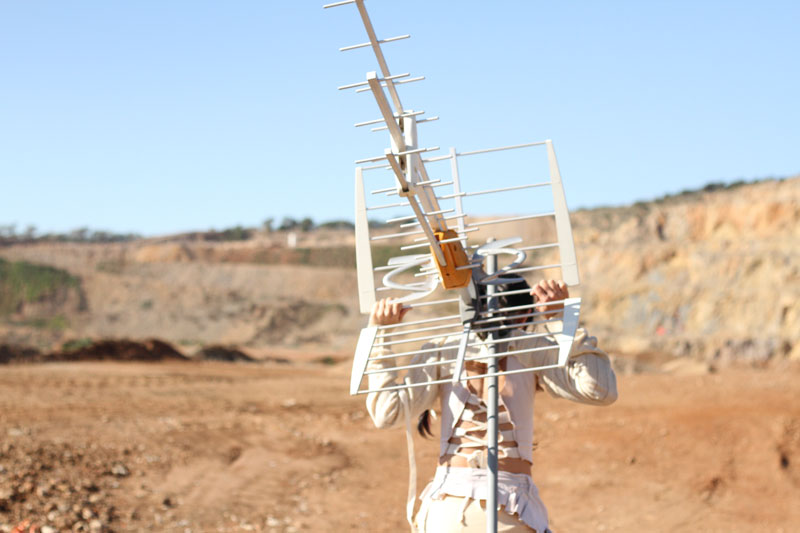
PERFORMANCES:
March, 5 | 19:00h. Josefina Bardi. Ensayos de desplazamientos
March, 6 | 19:00h. Eléonore Ozanne. Perdón - Gracias
March, 7 | 19:00h. Valentina Alvarado Matos. voy raspando la hoja y la voz
March, 8| 19:00h. Ra Asensi. Ese entorno endurece mi piel
March, 9 | 17:00h. Agustina Palazzo. El peso de la ciudad lo llevo conmigo
Art Madrid celebrates twenty years of contemporary art from March 5 to 9, 2025, at the Crystal Gallery of the Palacio de Cibeles. During Art Week, it becomes an exhibition platform for both national and international galleries and artists. In this edition, with the aim of providing a space for artists working in the field of performative arts, the fair presents Raíces Afuera, a performance cycle that explores notions of belonging and the need for roots in a contemporary world characterized by fragmentation, displacement, and disconnection. Set within the context of the fair as a critical and reflective space, the project challenges the relationship between the individual, their environment, their community, and their sense of identity.
